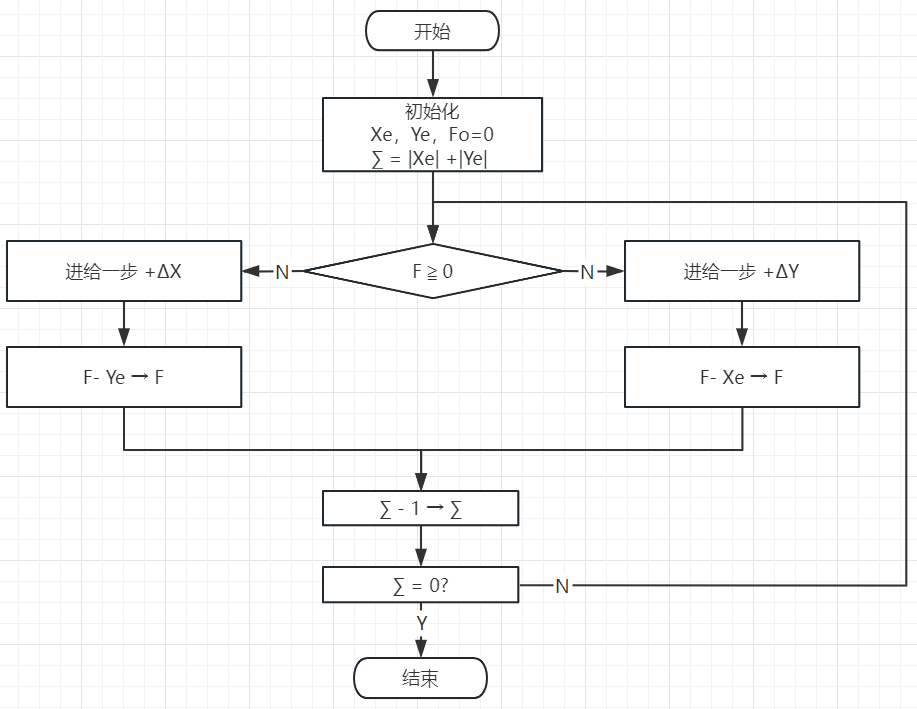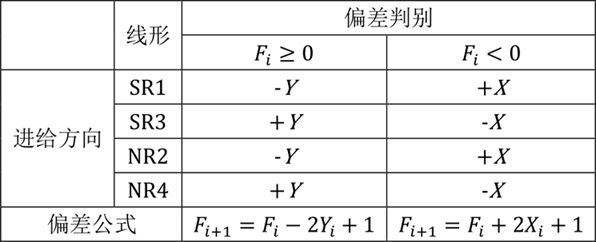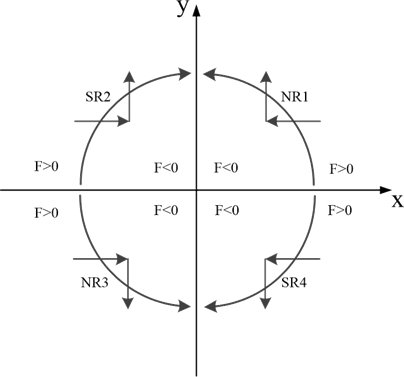1
2
3
4
5
6
7
8
9
10
11
12
13
14
15
16
17
18
19
20
21
22
23
24
25
26
27
28
29
30
31
32
33
34
35
36
37
38
39
40
41
42
43
44
45
46
47
48
49
50
51
52
53
54
55
56
57
58
59
60
61
62
63
64
65
66
67
68
69
70
71
72
73
74
75
76
77
78
79
80
81
82
83
84
85
86
87
88
89
90
91
92
93
94
95
96
97
98
99
100
101
102
103
104
105
106
107
108
109
110
111
112
113
114
115
116
117
118
119
120
121
122
123
124
125
126
127
128
129
130
131
132
133
134
135
136
137
138
139
140
141
142
143
|
from decimal import *
import math
class Circle(object):
def __init__(self, g=3, start=(0, 0), end=(0, 0), offset=(0, 0), r=0) -> None:
"""
g 顺圆=1,逆圆=0
start 圆弧起点(xs,ys)
end 终点(xe,ye)
offset 偏移量(i,j)
r 圆弧半径,r>=0劣弧,r<0优弧
"""
self.start = tuple(
map(lambda x: Decimal(str(x)).quantize(Decimal("0.000")), start)
)
self.end = tuple(map(lambda n: Decimal(str(n)).quantize(Decimal("0.000")), end))
self.g = g
if offset != (0, 0):
self.offset = tuple(
map(lambda x: Decimal(str(x)).quantize(Decimal("0.000")), offset)
)
else:
self.r = Decimal(str(r))
self.zoom = Decimal(1000)
self.delta = Decimal(1) / self.zoom
self.__getCenter()
def __str__(self) -> str:
return "start=({:,.3f},{:,.3f}); end=({:,.3f},{:,.3f}); center=({:,.3f},{:,.3f}); radius={:,.3f}".format(
float(self.start[0]),
float(self.start[1]),
float(self.end[0]),
float(self.end[1]),
float(self.x0),
float(self.y0),
float(self.r),
)
def __getCenter(self) -> tuple:
if "offset" in dir(self):
self.x0 = self.start[0] + self.offset[0]
self.y0 = self.start[1] + self.offset[1]
self.r = math.sqrt(
(self.end[0] - self.x0) ** 2 + (self.end[1] - self.y0) ** 2
)
self.r = Decimal(str(self.r))
else:
xs, ys = self.start[0], self.start[1]
xe, ye = self.end[0], self.end[1]
match (self.g, xs > xe, ys > ye):
case (3, 1, 0) | (2, 0, 1):
self.__qd = 1
case (3, 1, 1) | (2, 0, 0):
self.__qd = 2
case (3, 0, 1) | (2, 1, 0):
self.__qd = 3
case (3, 0, 0) | (2, 1, 1):
self.__qd = 4
c1 = (xs**2 - xe**2 + ys**2 - ye**2) / (2 * xs - 2 * xe)
c2 = (ys - ye) / (xs - xe)
a = 1 + c2**2
b = 2 * (xe - c1) * c2 - 2 * ye
c = (xe - c1) ** 2 + ye**2 - self.r**2
y0 = (-b + Decimal(str(math.sqrt(b**2 - 4 * a * c)))) / (2 * a)
x0 = c1 - c2 * y0
xm = (xs + xe) / 2
ym = (ys + ye) / 2
if self.__qd == 1 and xm > x0 and ym > y0:
self.y0 = y0
self.x0 = x0
elif self.__qd == 2 and xm < x0 and ym > y0:
self.y0 = y0
self.x0 = x0
elif self.__qd == 3 and xm < x0 and ym < y0:
self.y0 = y0
self.x0 = x0
elif self.__qd == 4 and xm > x0 and ym < y0:
self.y0 = y0
self.x0 = x0
else:
self.y0 = (-b - Decimal(str(math.sqrt(b**2 - 4 * a * c)))) / (2 * a)
self.x0 = c1 - c2 * self.y0
def __offset(self) -> None:
self.__xs = self.start[0] - self.x0
self.__ys = self.start[1] - self.y0
self.__xe = self.end[0] - self.x0
self.__ye = self.end[1] - self.y0
self.f = 0
self.step = abs(self.__xs - self.__xe) + abs(self.__ys - self.__ye)
self.step = self.step * self.zoom
def __compensation(self) -> None:
match (self.g, self.f >= 0, self.__qd):
case (3, 1, 1) | (3, 0, 2) | (2, 0, 3) | (2, 1, 4):
self.f = self.f - 2 * self.__x + self.delta
self.__x -= self.delta
case (3, 0, 1) | (3, 1, 4) | (2, 0, 2) | (2, 1, 3):
self.f = self.f + 2 * self.__y + self.delta
self.__y += self.delta
case (3, 1, 3) | (3, 0, 4) | (2, 1, 2) | (2, 0, 1):
self.f = self.f + 2 * self.__x + self.delta
self.__x += self.delta
case (3, 0, 3) | (3, 1, 2) | (2, 1, 1) | (2, 0, 4):
self.f = self.f - 2 * self.__y + self.delta
self.__y -= self.delta
def __iter__(self):
self.__offset()
self.__x = self.__xs
self.__y = self.__ys
return self
def __next__(self):
if self.step:
self.__compensation()
self.step -= 1
return (float(self.__x + self.x0), float(self.__y + self.y0))
else:
if self.__x + self.x0 != self.end[0] or self.__y + self.y0 != self.end[1]:
print("圆弧错误,请检查输入代码")
raise StopIteration
|



